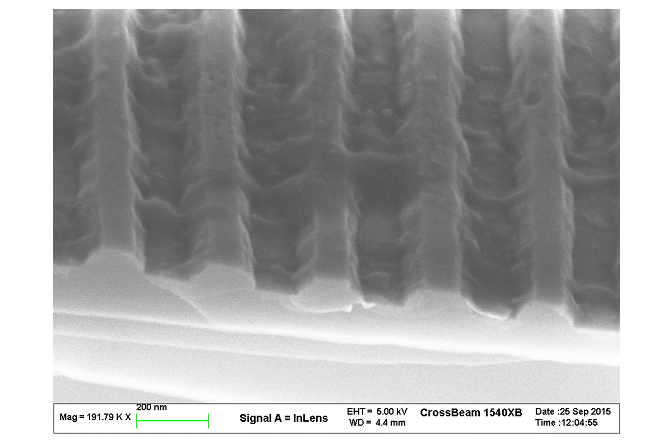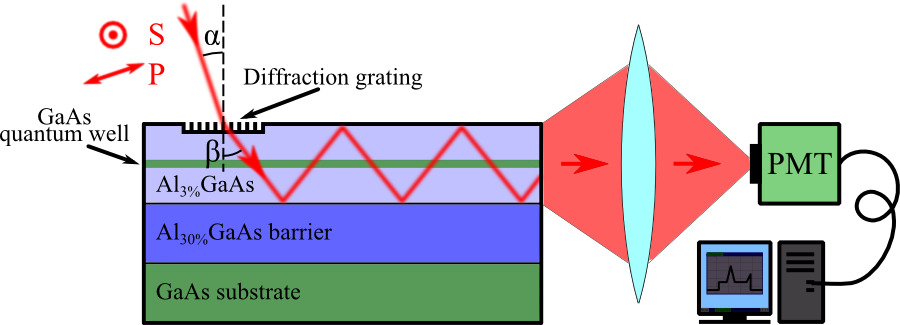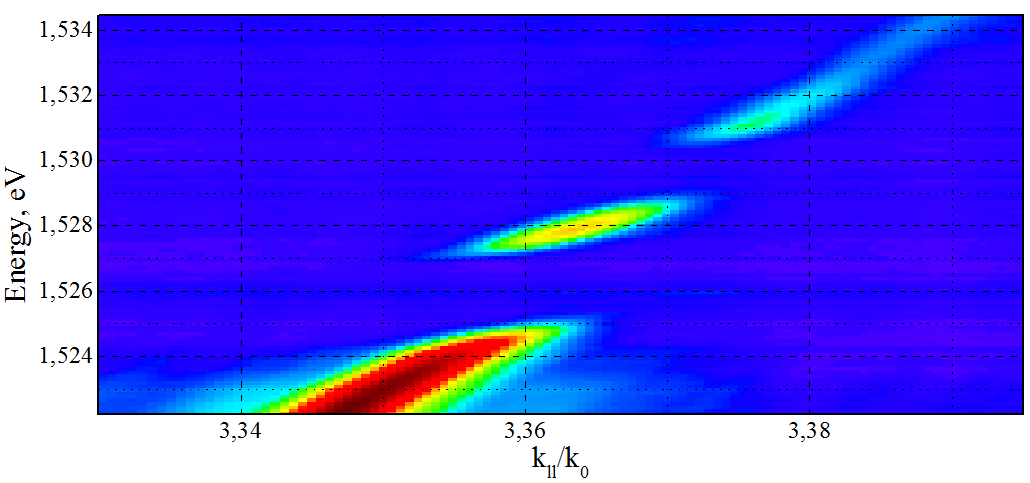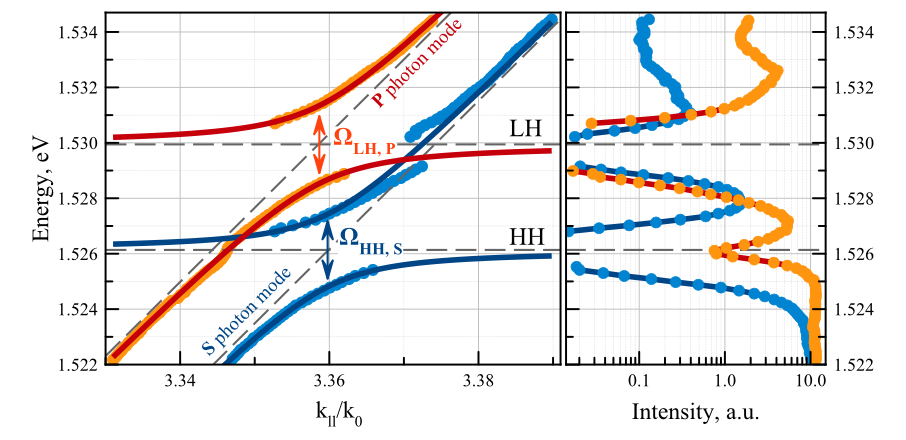|
Exciton-Polaritons in Planar Total Internal Reflection Waveguides Since the discovery of the strong coupling between an electromagnetic field and material resonances there is a constantly raising interest in exciton-polariton investigations in semiconductor heterostructures. These quaziparticles, originating from the photon-exciton interaction, inherit designatory properties from both parents: a strong nonlinearity through the exciton-exciton interaction and small effective mass from the photonic part. Researchers worldwide have succeeded in observing a number of important quantum effects on exciton-polaritons in high finesse DBR microcavities with quantum well: stimulated polariton scattering, Bose-Einstein polariton condensation and polariton condensate superfluidity. In the last years significant steps have been made in using planar waveguides as a media for observing propagating polaritons with large propagation distance values. Planar total internal reflection (TIR) waveguides have several essential advantages over those based on DBR microcavities: relatively small heterostructure thickness, growth construction simplicity and almost complete absence of light leakage from the waveguide. These factors and a perfection of molecular beam epitaxy technology for QW production give grounds for high expectations in observing a strong coupling effect in such systems. Experiment Here we explain experimental approach and present results obtained for sample T699p2: an asymmetrical TIR-waveguide with 930 nm thick Al3%GaAs core and 13.7 nm GaAs quantum well in its midpoint. A vacuum and 960 nm thick Al30%GaAs serve as cladding layers. First we need to solve a problem of injecting the light inside the sample. It is impossible to directly excite the TIR-waveguide from the upper or lower half-space, because you can't achieve light propagation angles exceeding the characteristic angle for cladding-core surface. The obvious solution lies in enlighting the sample from the sidewall. But because of near-wavelength thickness of the core layer (930 nm) this choice requires solution of several complicated engineering challenges: microlens placement inside the cryostat cold head, a perfect optics adjustment and a complete absence of any vibrations in the scheme. Turns out that light injection in the TIR-waveguide core can also be performed through a grating coupler placed on the sample surface. It allows to bypass the Snell refraction law and with a careful choice of parameters to obtain any desired light propagation angle in the core. With a technology of Ar+ ion etching though an electron-beam lithographed PMMA mask a set of square 300 mkm wide diffraction gratings with a period of 250 nm and 100 nm depth was planted on the sample surface. The period was chosen to allow the existence of only 1 diffraction order inside the waveguide core with the diffraction angle of ~70°, what is almost equal to the lowest index mode of the TIR-waveguide with given layer composition. The results presented here were obtained for the grating #3 with the 100 mkm distance from the end of the grating to the cleaved edge of the sample (Fig.1). During the measurement process the sample was kept in closed cycle helium cryostation Cryomech ST15 at the temperature 10K. The light of CW tunable Sacher Lasertechnik Lynx TEC-120 laser was injected into the lowest index mode of the TIR waveguide by the first diffraction reflex of the grating. We collect the light outcoming from the waveguide edge in a wide spatial angle with a short-focus lens and detect if with a PMT (Fig.2). The experimental setup allows us to perform fast scanning of an incidence angle α and slow scanning of laser light energy E. Results Away from exciton resonances this intensity-angle dependence for a single wavelength value has a maximum corresponding to the photon mode in TIR-waveguide with polarization splitting of around 4 meV. At the energies close to the resonances of exciton with heavy hole (HH) and light hole (LH) we observe an anticrossing effect due to the strong coupling between photon and exciton modes (Fig.3&4). A maximum splitting for HH-exciton was observed in S polarization (with the Rabi splitting ΩHH, S = 2.6 meV). For LH-exciton – in P polarization with ΩLH, P = 2.8 meV. The reported study is partially supported by RFBR, research project No. 15-02-07668 a. For more information on exciton-polaritons in planar waveguides and DBR-microcavities check the following publications: For more information on quantum wells and advances of MBE-technology check the following publications: |
 Fig.1. Diffraction grating etched on the sample surface by Ar+ ions through an electron-beam lithographed PMMA mask.  Fig.2. Scheme of the experiment.  Fig.3. Three-dimensional data obtained in the experiment: energy-angle dependence of the signal intensity.  Fig.4. Angle-resolved spectral positions of signal maxima and spectral dependence of the peak intensity. |

 English
English  Русский
Русский